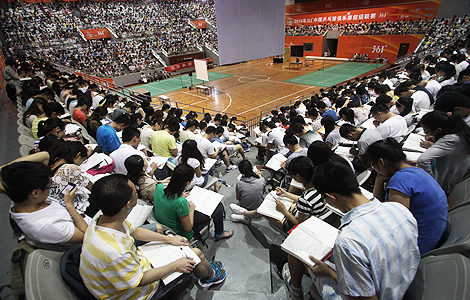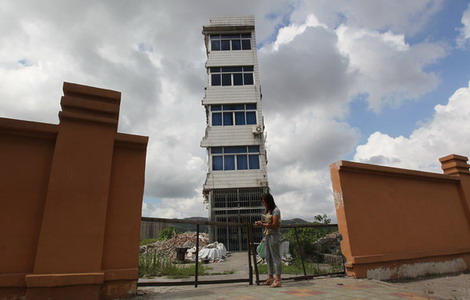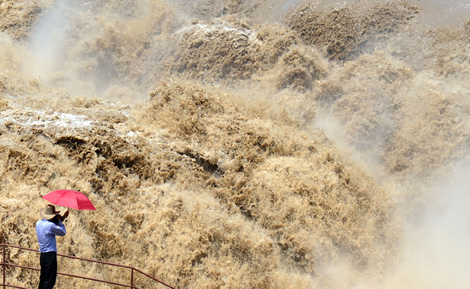

 |
|
A drainage pipe from an ore treatment plant at Xiaowangcun village in Chaohu city, Anhui province, leads to a pond in the village. Li Yuanbo / for China Daily |
Starting from near zero
The country lacks sound regulations and laws as well as technical frameworks to manage and remedy brownfields, the World Bank report says.
The existing laws and regulations, such as the Environmental Protection Law and the Water Pollution Prevention and Control Law, could not effectively tackle land pollution, Jia said.
Moreover, different government departments - the ministries of environmental protection, land and resources, agriculture and others - are involved with the tasks of managing land pollution. Jia said their respective roles and responsibilities are rather vague, which is an obstacle for smooth communication and coordination on the issue.
Environmental officials admitted to China Daily that monitoring of contaminated sites is inadequate. Only a few big cities such as Beijing and Chongqing have thoroughly investigated the scope of the pollution and its environmental risks.
Experts estimate that contaminated industrial sites in the country number 300,000 to 600,000.
Remediation for such sites has become an urgent need as the country's rapid urbanization creates a huge demand for usable land, which in turn requires both funding and technical guidelines from the government.
The country's 12th Five Year Plan aims to raise the urbanization rate from 47.5 percent in 2010 to 51.5 percent by the end of 2015, with an average annual increase of 4 percent.
With more people moving from rural areas into the cities, clean and safe land is essential.
Paying the bill
In China, the most commonly used remediation practice is to remove the polluted soil, which is then deposited into a landfill or burned, and replace it with clean soil.
Developers sometimes shy away from remediation because of the costs. Vanke, China's biggest listed property developer, once spent 100 million yuan to treat 30,000 square meters on the previous site of a pesticide plant and a coating business.
Some developers argue that they should not pay all the costs of remediation because they didn't cause the pollution.
Wang Shuyi, director of the Research Institute of Environmental Law at Wuhan University, said the polluters should pay for the remediation. In cases where it's impossible to identify who's liable - some early factories have long since gone bankrupt, for example - the money might come from public funding.
The World Bank report recommended using economic measures such as loans, dedicated subsidies and environment taxes to support clean-ups of toxic sites. Another possibility, used in many Western countries, is setting up a superfund; stakeholders put in money every year to support remediation.
"We cannot simply leave the contaminated sites unheeded," Wang said.
Jiang Xueqing contributed to this report.







